Consider this – more than 93% of the time, the first thing people do when going online is use a search engine, and the top three results get 60% of the clicks for the results page.
These SEO statistics from the Search Engine Journal are clear testimony of how the power of search engine optimization can significantly influence the success of your online marketing endeavors. To fully capture your share of the massive global online audience, you need to understand the basics of SEO.
Download Simple Guide to SEO

How Search Engines Operate
Search engines guard the specifics of their ranking algorithms pretty well due to their commercially sensitive nature. However, careful observation has revealed enough of the fundamental concepts for us to have a rudimentary understanding of how search engines operate.
According to Matt Cutts, an engineer at in the quality department Google, running a Google search does not mean you’re actually searching the entire web; you’re conducting a search on Google’s index of the web. This means that new pages don’t usually show up in results at all until Google’s automatic updates have had the time to find them.
Google conducts these updates with software bots also known as web crawlers. The crawlers search through a few web pages at a time, then follow any links posted on those pages, and so on. As they travel on this exponentially lengthening path, they record all the pages they come into contact with and rank them in terms of importance and relevance to a given set of keywords.
Now, you may be wondering exactly what criteria they use to determine these rankings. Suppose you search for the query ‘football scores.’ The crawlers will search Google’s index and find all the pages relevant to those search terms – and there are a lot of them! How does Google decide on which pages to display? By asking hundreds of questions about things like whether the words appear in the URL, title, or early in the content; how many times the words appear; whether synonyms of the words are included; whether the page is of high or low quality; and many more. SEO is the art of manipulating these factors to your advantage to grab one of those precious first few spots on the results page.
On-Page SEO
There are two sides of SEO: on-page SEO and off-page SEO.
On-page SEO refers to Google’s ranking factors that are determined by looking directly at the page you’re trying to optimize. The on-page ranking factors are exclusively in your own hands, which is why there’s no excuse for letting them slide.
Conversely, off-page SEO involves the ranking factors that rely on external social signals over which you have less control. These include links on other blogs, social media sharing, and the personal history of the searcher. The two sides work very differently, but both must be strong and balanced for you to fully succeed in SEO.
Optimizing On-Page Criteria
So you know you can directly impact your on-page ranking: the question, then, is how. Some things you’ll need to address include:
Architecture
Great website architecture provides the users with an easy, enjoyable experience as they navigate through your website. Some of the features that make up this kind of design include fast loading speed, a clean, uncluttered layout, and a mobile-friendly configuration. The mobile-friendly aspect is particularly vital since more and more Internet traffic is being routed through smartphones, prompting Google to include this criteria as a specific part of their ranking algorithms. The better-designed your website is, the longer users will stay on it, boosting your overall rankings.
HTML
HTML helps Google’s automated systems better understand the structure of your content by clearly marking titles and sections. You do not require to be a professional coder or an expert to understand the fundamentals. Some of the basics of HTML include:
-
Wrapping the content title in an H1 tag (some of the content management systems like WordPress automatically do this
-
Wrapping the subheading in H2 tags
-
Adding schema markup to your HTML (this will improve the way your website displays in the search engine results page by enhancing the snippets below the page title – you can use the Moz tools to help with this)
Content
Content is king. When you make a keyword search, Google always tries to provide users with the most relevant and useful content. Therefore, the number one most important factor of modern SEO technique is providing a steady supply of content that consistently meets these standards.
Some of the common techniques to ensure you get SEO-friendly content include:
-
Writing quality content (even though the quality is subjective, Google can estimate it through peripheral indicators like the number of repeat visitors, dwell time, bounce rate, and chrome bookmarks)
-
Use of relevant keywords (drop them in the first 100 words for best effects)
-
Sprinkle LSI keywords (synonyms that Google uses for relevancy)
-
Post long content (aim for at least 1900 words for every piece of content)
Keyword Research
Before you can really put SEO into action, though, you first need to determine the best set of keywords to get relevant traffic to your site. You want to choose keywords that will not only bring in many users, but that also accurately describe your product or content so that those who visit are actually interested. According to Moz, keyword research is one of the most high-return tasks that you can do for your website. Without the right keywords, you can’t effectively build a ranking strategy or buy ads, and you’ll miss out on that potential relevant traffic.
Choosing the Right Keywords For Your Site
Finding the right keywords can be a tedious activity, but it can really pay off if you do it right. Look for keywords that:
- Have a high search volume (i.e. many people are searching for the keywords)
- Have little competition (i.e. not many websites are ranking for the given keyword)
- Are relevant to your site
There are numerous tools that you can use to do the keyword research. One of the commonly-used free tools used for keyword research purposes is Google’s Adwords. However, it’s not as efficient or user-friendly as paid tools like the Moz toolbar, Raven or Semrush.
Long Tail Keywords
Key words that are several words in length (in other words, more like key phrases) are known as long tail keywords, and using these can give you a surprising edge in SEO. For example, if you are doing SEO for a site that sells laptops, it’s easier to rank for a long tail keyword like ‘best gaming laptops under $500.’ In most cases, people searching for the long tail keywords are people who know exactly what they want, and if you can provide that item, they are far more likely to make a purchase than a casual browser. This also usually gives you a higher chance of ranking within the first page, since these keywords do not have a lot of competition. You should also include conventional short keywords when doing this, though, to make sure that you don’t narrow your market too much.

Speed & Social Signals
Speed and social signals are now part of the more than 200 Google ranking factors. They’re more subtle aspects of SEO than keywords, but they are an integral part of a well-rounded SEO approach.
Page Speed
Page speed refers to the loading time or the number of seconds that a webpage takes to display content. Users expect to be able to access your site quickly and easily; a full 53% of mobile users will abandon a page if it takes more than 3 seconds for it to load. That’s a lot of potential customers to miss out on! For this reason, you want to keep your page speed numbers as close to this figure as possible.
How to improve your page speed
De-clutter your website and remove unnecessary content, use compressors such as Gzip to compress HTML, CSS and Java files that are larger than 150 mbs; for images, you can use Photoshop and still retain most of the image quality. Reduce redirects and capitalize on browser caching so that when surfers revisit your site, they do not have to reload the entire page. All of these quick fixes help to improve server response time and keep your website running efficiently.
How important are social signals for SEO?
In a 2010 video for Google’s Webmaster’s Questions, one of the popular questions that was addressed was about the relevance of social signals in the SEO. The answer was that it was going to be more important as technology became more able to account for it; the Google quality team was working on an algorithm that would enable ranking using Facebook and Twitter. However, users were also cautioned against getting purely reciprocal follows on their Twitter feed. Just like the page rank is about the quality, not the quantity, of links, Twitter followers must be real followers (not bots or shell accounts) to truly count.
Backlinks
Google has billions of indexed web pages and websites, and links are a critical part of their efforts to gauge the quality of each one. Backlinks are links that lead people to your site from another site, and they’re extremely important. Following a solid back-linking strategy is the first step towards a successful SEO campaign. In fact, content and backlinks are some of the top Google ranking factors.
In the early years of the Internet, links were treated as votes in a democracy, and the more links a website had, the higher it would be ranked. Now, search engines have refined the use of links using the complex algorithms; they can produce a subtle and nuanced evaluation of all the pages and its information.
Through backlinks, Google is not only able to analyze the popularity of your website, but also of the pages linking to your site. It also helps the search engine to measure other SEO metrics like trust, relevance, spam levels, and authority of your site. According to MozTrust, the majority of the most trustworthy sites tend to link to other sites of the same caliber.
How to Backlink Your Content
- Newsworthy content that inspires sharing
Powerful content will automatically drive backlinks to your site. Unique content that people genuinely want to engage with will encourage the readers to share it on forums and social media or even link to it from their own site.
- Guest post on authority sites
Having backlinks from authority sites matters more than any other back-linking strategy. Backlinks from authority sites within your area of specialty pass their page authority (page ranks) to your site. Some examples of authority sites include government websites, scholarly websites, national institutions, international organizations, and even other websites that are particularly high-ranking within your sphere.
Local SEO
Sometimes, a potential customer can only access businesses that are close to their geographic area. For example, a repair shop in Washington or a café in New York is only useful to those who live in those cities. More and more businesses are now tailoring their websites to target the local population and enable them to find them more easily by using local SEO.
Some SEO considerations in this area include:
NAP
This stands for Name, Place and Address, the three vital things you need to include when promoting a business with a physical location. Make sure you keep these consistent across all pages and platforms.
Online directories and citations
Not everyone will only use Google when looking for local businesses – many local businesses have not listed themselves with online directories such as Yelp or Merchant Circle, making them completely invisible to users of those sites.
Google My Business
Google My Business works like a combination of other business directories and the typical Google engine, providing Google results for a business that include helpful details like location and hours of operation right on the results page. It can synchronize with Google Maps and users’ location data to narrow results based on present location, so you may appear higher in the search results based on proximity alone.
Measuring Success
If you can’t measure it, you can’t improve it. In SEO, measuring your success is vital. Various metrics can be used to examine the level of SEO success.
- Organic traffic
Not all traffic is created equal – the organic traffic (people directly visiting your site with no outside prompting) is what matters in SEO. While overall traffic (paid search, email, display, and indirect) might be spiraling down, a website can still be well-ranked if the organic traffic remains constant or shoots up.
- Referrals
Getting referrals from other sites is a clear testimony that your site is gaining a reputation in its field, and therefore that you’re doing your SEO right.
- Conversion rates
The conversion rate refers to the percentage of visitors who perform your desired action, whether that’s purchasing a product or signing up for a newsletter. This number is where you will ultimately see any impact your SEO and other marketing efforts are making, so keep an eye on it!
Common SEO Myths and Misconceptions
Millions of people search the term ‘SEO‘ every month. There has been a quagmire surrounding the definition of the term and how the technique works. Here are some of the common myths and misconceptions surrounding SEO; don’t fall for them!
- SEO is all about keywords and links (as we’ve explained, it’s a lot more than that)
- Keyword stuffing/density is an important SEO metric (not if it results in sub-par content)
- Paid results can boost your ranking (your ranking is the same, your results are just artificially boosted)
- The more links in your content translates to higher ranking (again, quality (relevancy) over quantity)
- Top level domains improve rankings (this does not impact rankings)
SEO is a complicated field for beginners to master, but that’s what experts are for. If you’re looking to make your SEO campaigning strategies more efficient, effective and encompassing, contact SIMPLEMACHINE today – we know exactly how to get your business the online spotlight it deserves.



